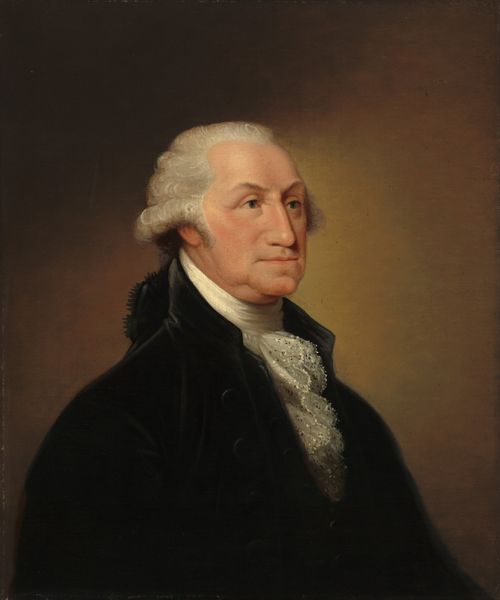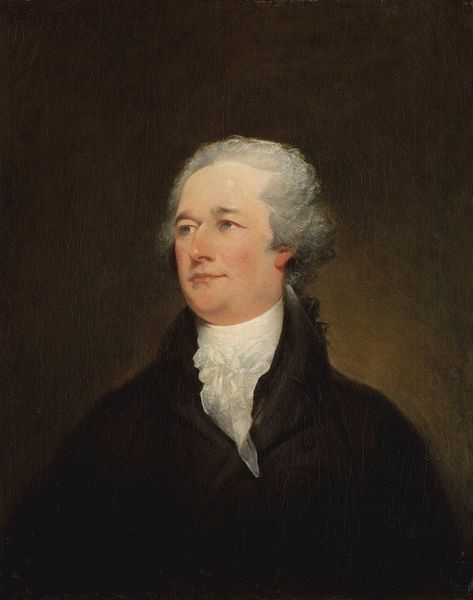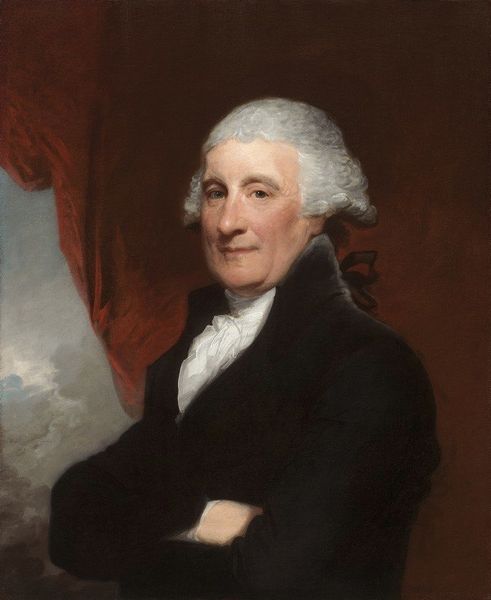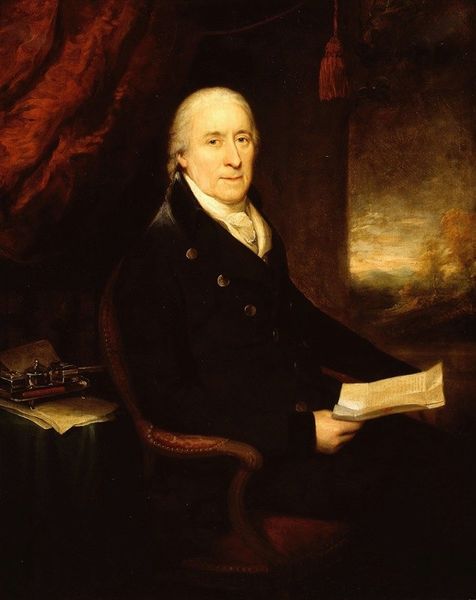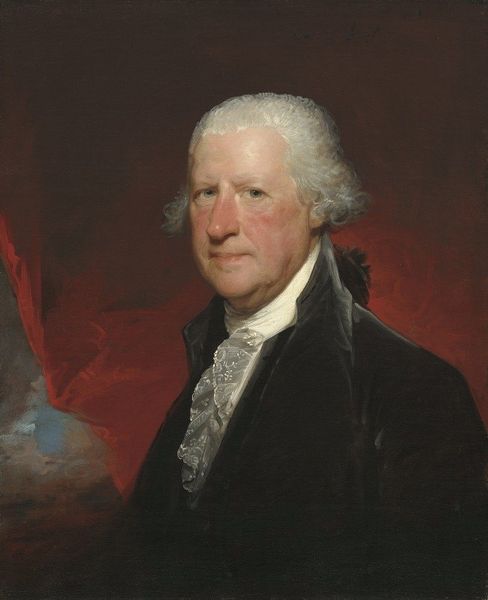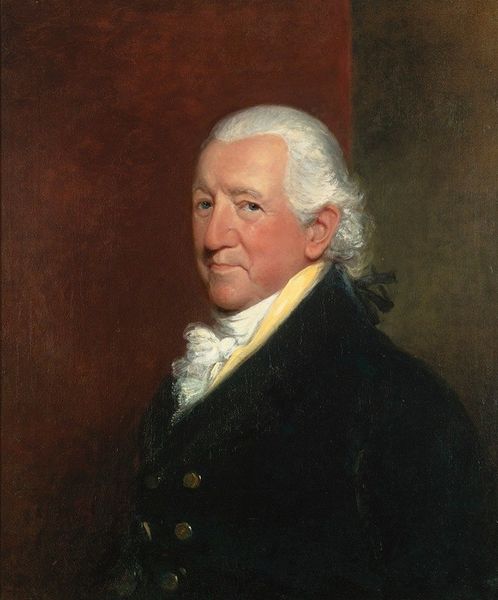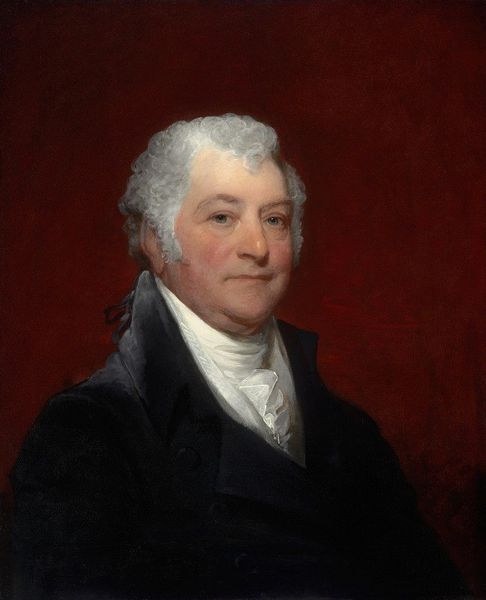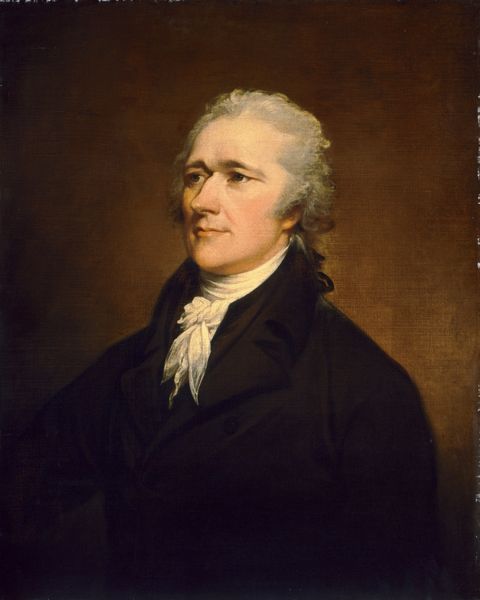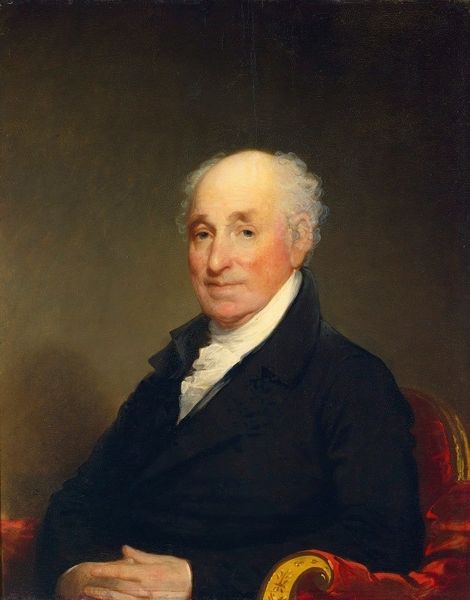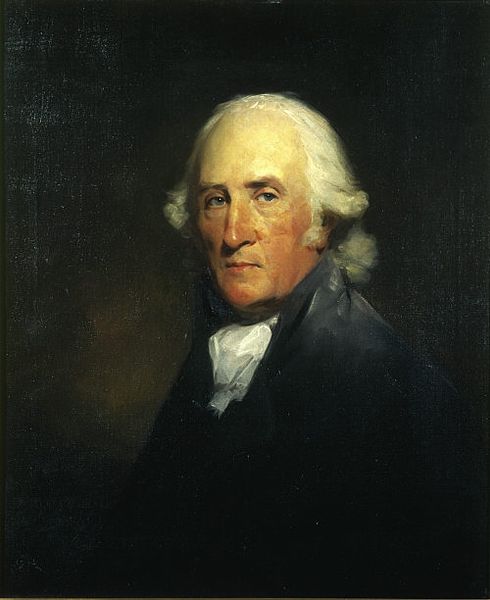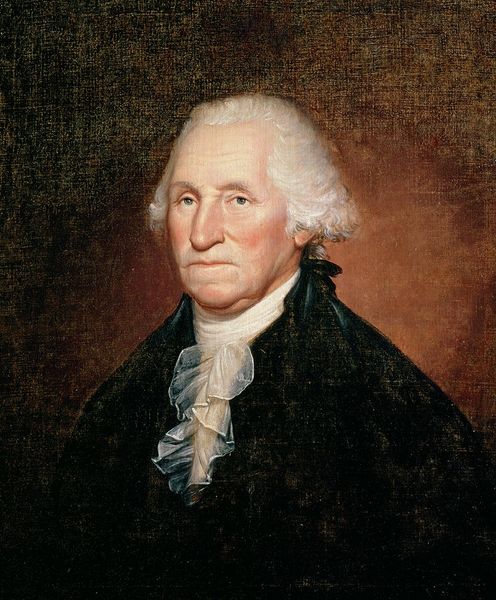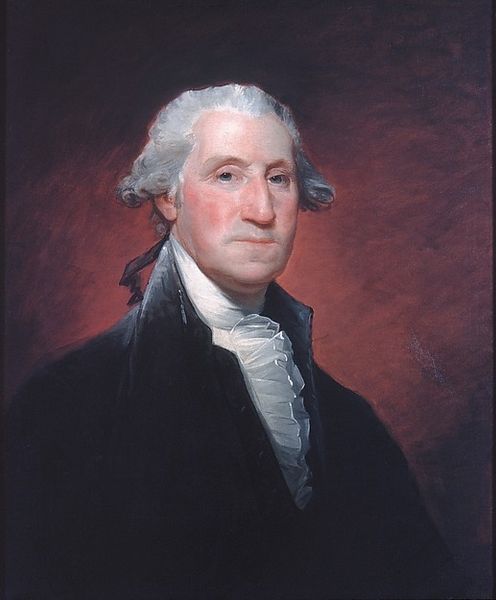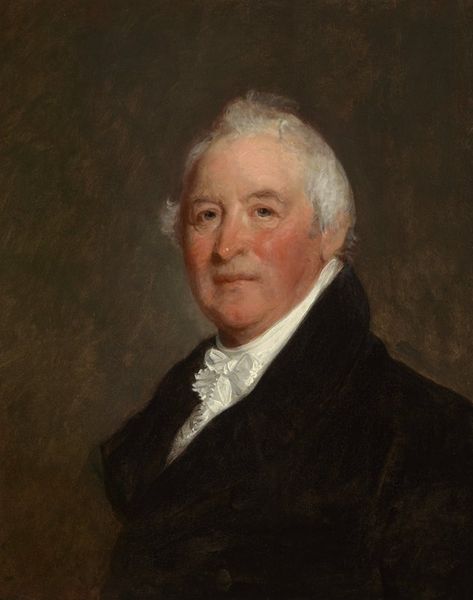
#
figurative
#
portrait reference
#
portrait head and shoulder
#
animal portrait
#
animal drawing portrait
#
portrait drawing
#
facial portrait
#
portrait art
#
fine art portrait
#
celebrity portrait
#
digital portrait
Copyright: Public Domain: Artvee
Editor: Here we have a portrait, purportedly of William Brownlow, by Gilbert Stuart. The artist's facility with the brush is remarkable. It’s the arrangement of color, the contrast of the dark coat against the paler face and wig, that I find initially striking. What is your impression of its aesthetic qualities? Curator: Observe how Stuart manipulates the light. It does not merely illuminate; it sculpts the form. The subtle gradations of tone on the face suggest volume and bone structure, achieved with astonishing economy of brushstrokes. Note also the use of impasto, particularly in the highlights of the wig, lending texture and a tactile quality to the surface. It's less about historical representation and more about pictorial construction. Editor: Yes, I see the impasto now that you mention it! It's also very interesting that he chose this level of finish – not too polished. Can you speak to the composition more generally? Curator: The composition is elegantly simple: a pyramidal structure anchored by the sitter's gaze. This directs the viewer's attention, creating an immediate connection. The relatively muted palette contributes to the painting's restrained dignity. It's not a narrative; it’s an arrangement of form and color. Note the absence of overt symbolism. The letter in his hand becomes simply another compositional element. Editor: That makes a lot of sense, focusing on pure pictorial language rather than just being a record of someone’s likeness. I’m curious, does looking at portraits this way take away from their value as historical records? Curator: Not necessarily. Formal analysis provides a foundation for understanding the painting’s visual language, its inherent qualities as a crafted object. History gives context, but the art exists on its own merit of arrangement. It’s a starting point for deeper consideration, rather than the sole objective. Editor: Thank you. I have much to think about with color, tone, form and that exquisite manipulation of light, rather than merely looking for an illustrative story. Curator: Indeed. The aesthetic qualities themselves contain the most profound story.
Comments
No comments
Be the first to comment and join the conversation on the ultimate creative platform.
